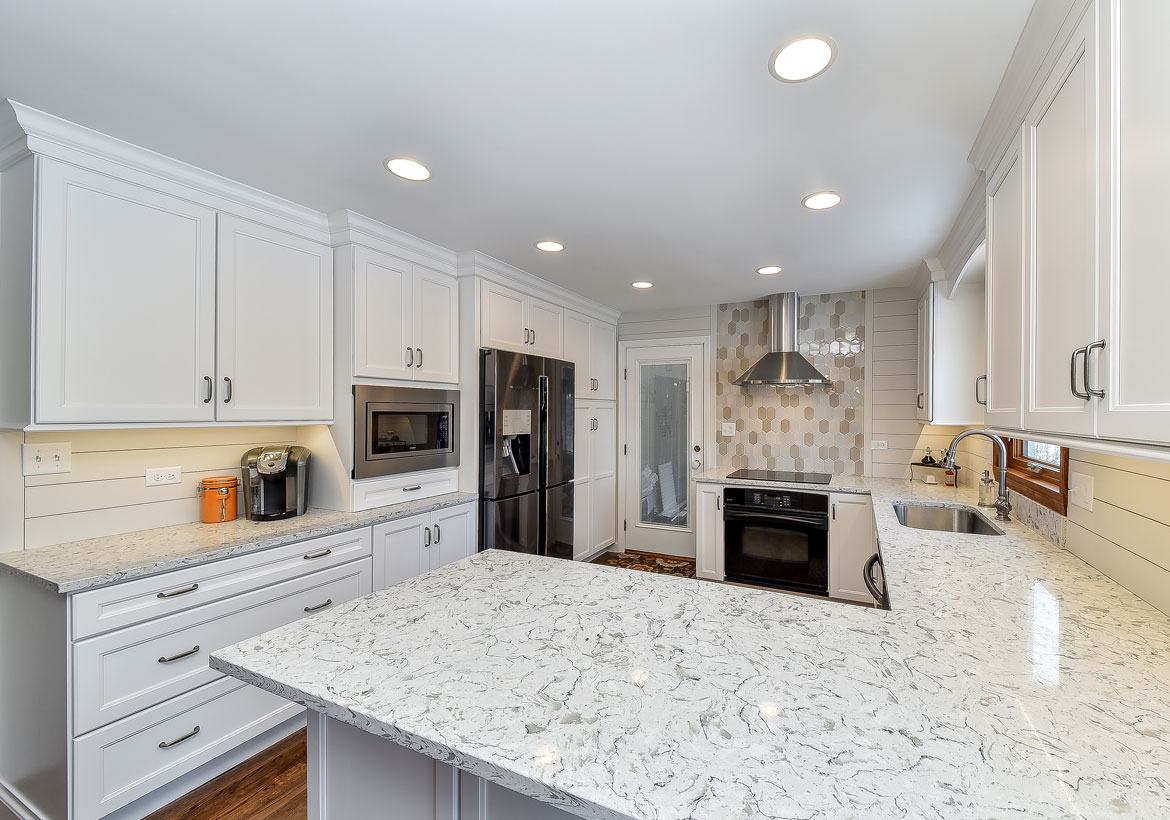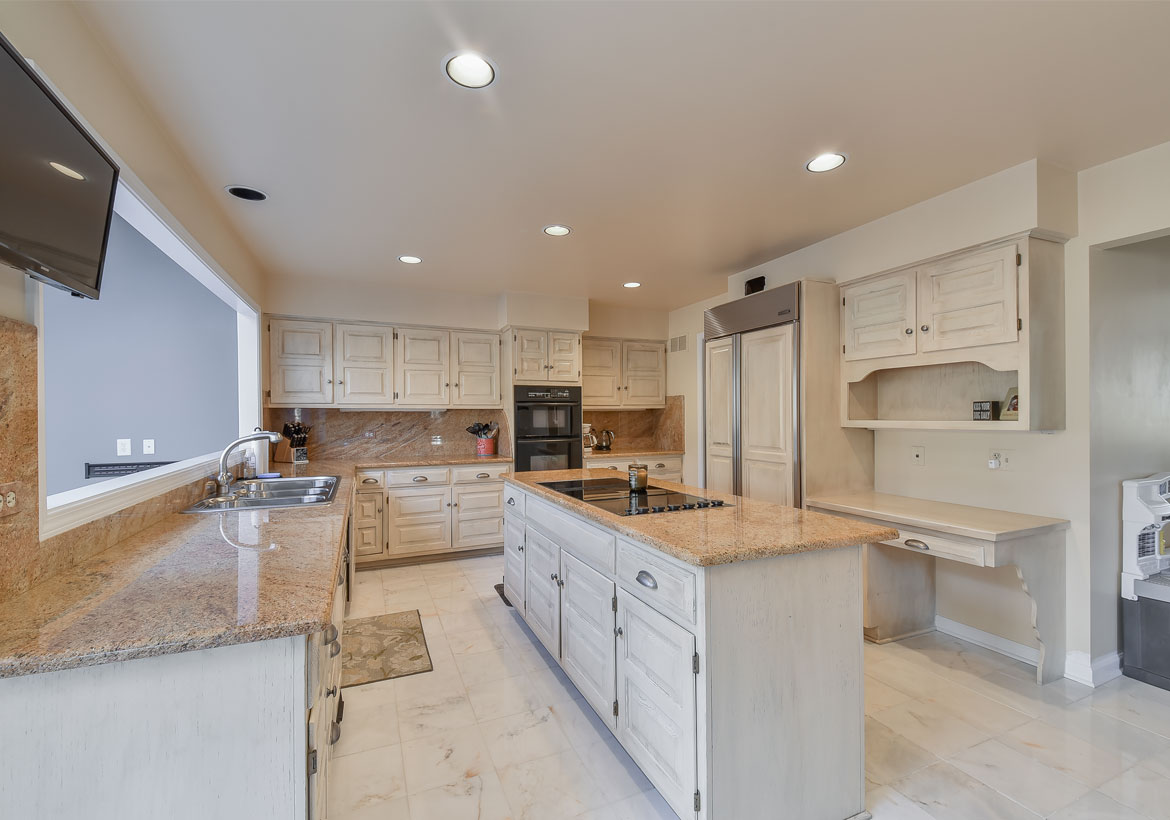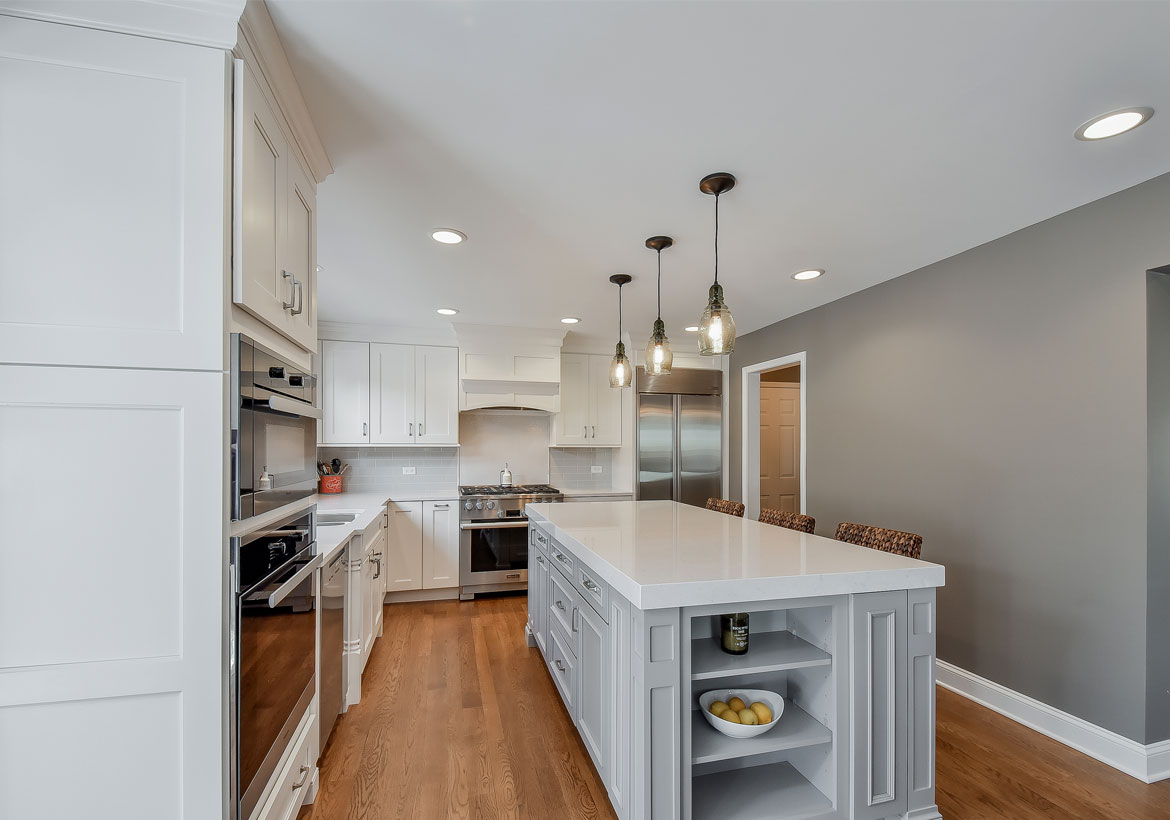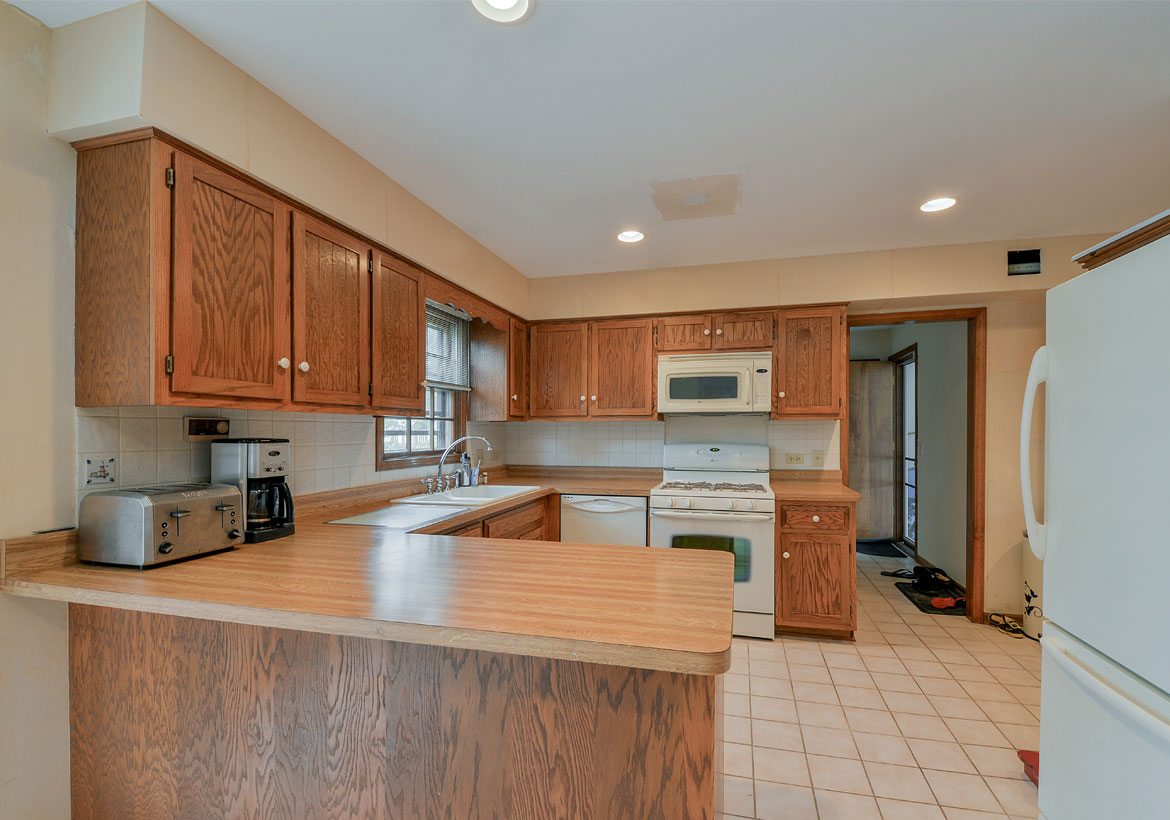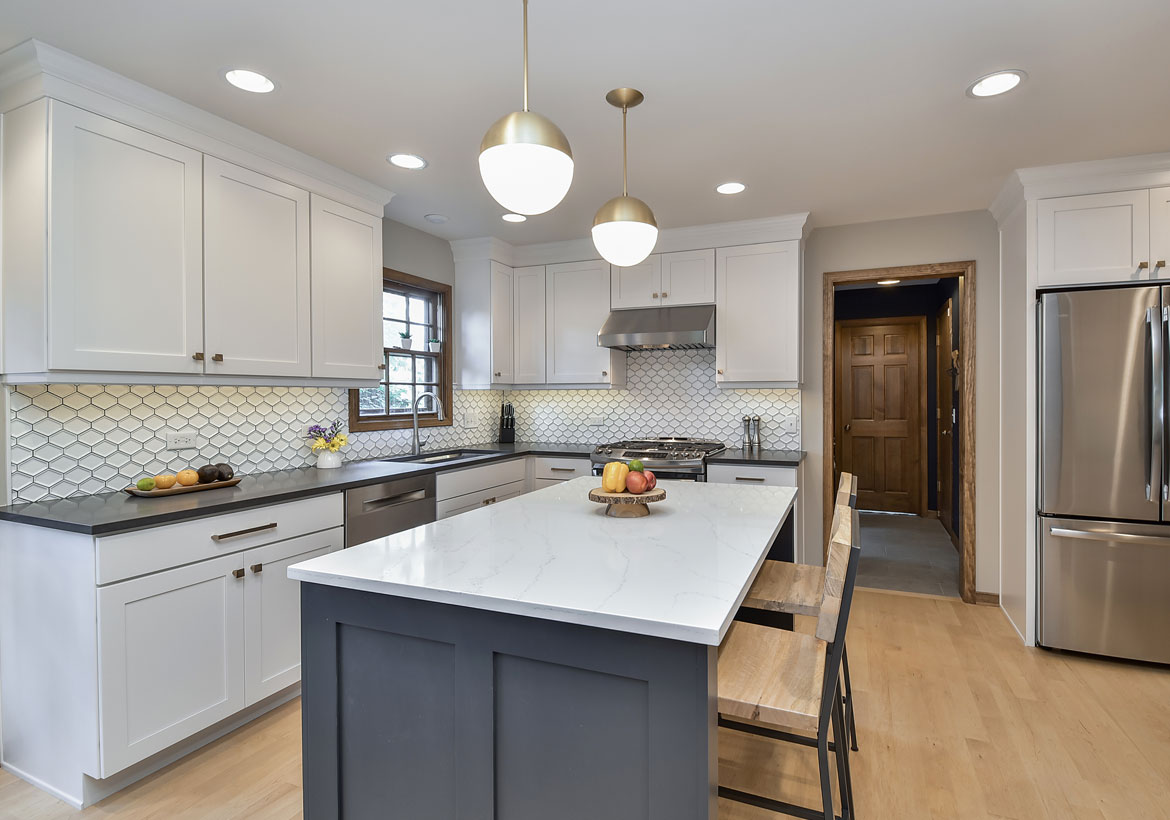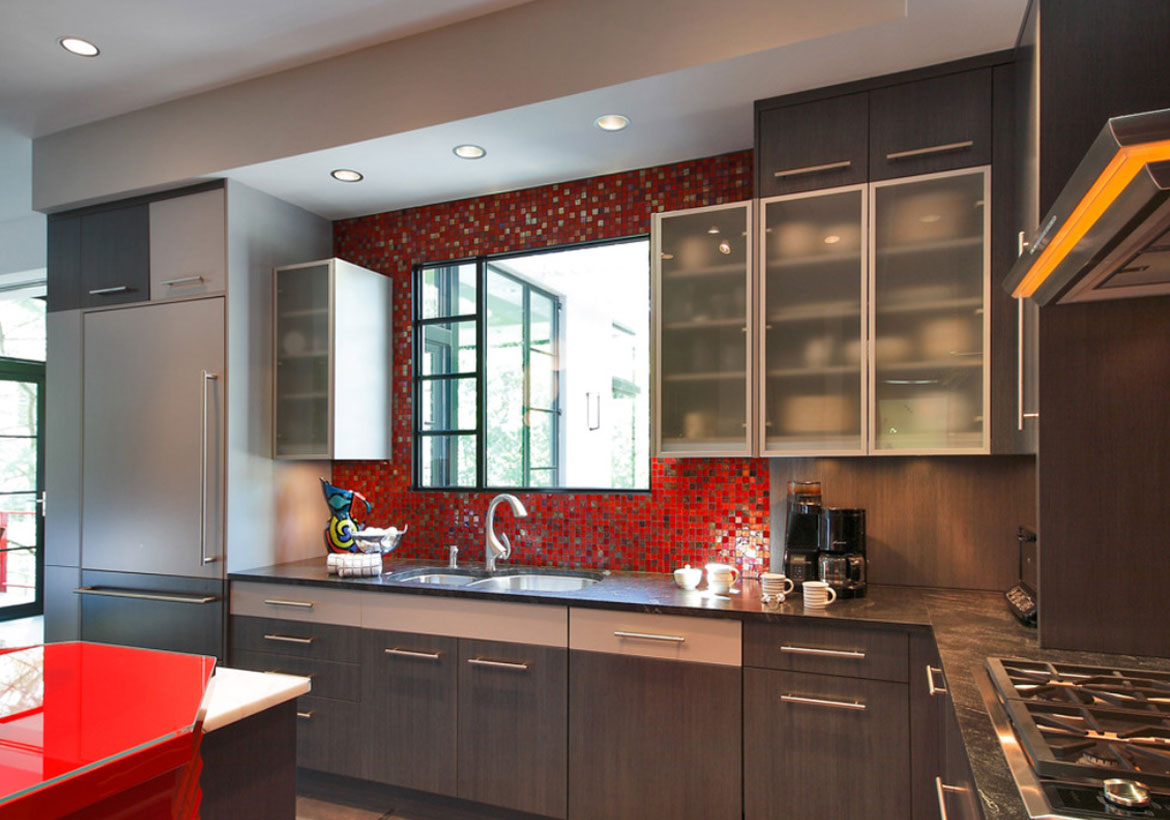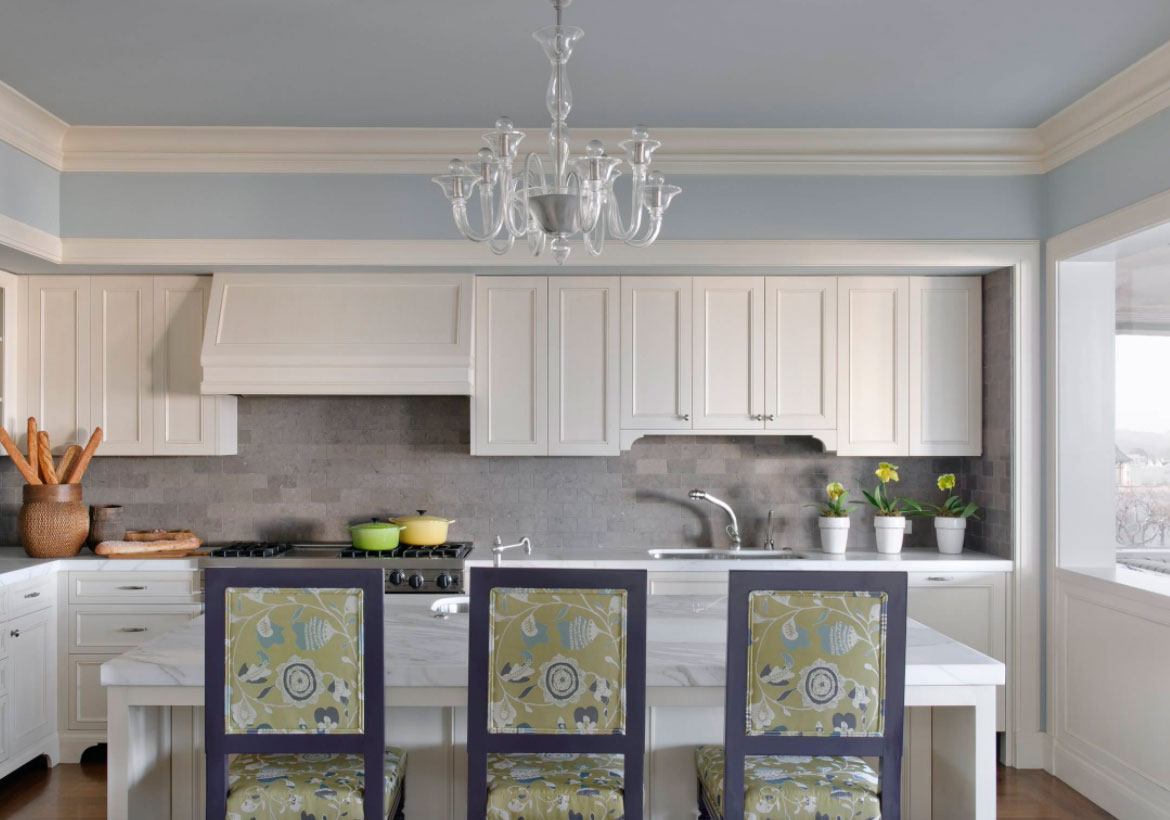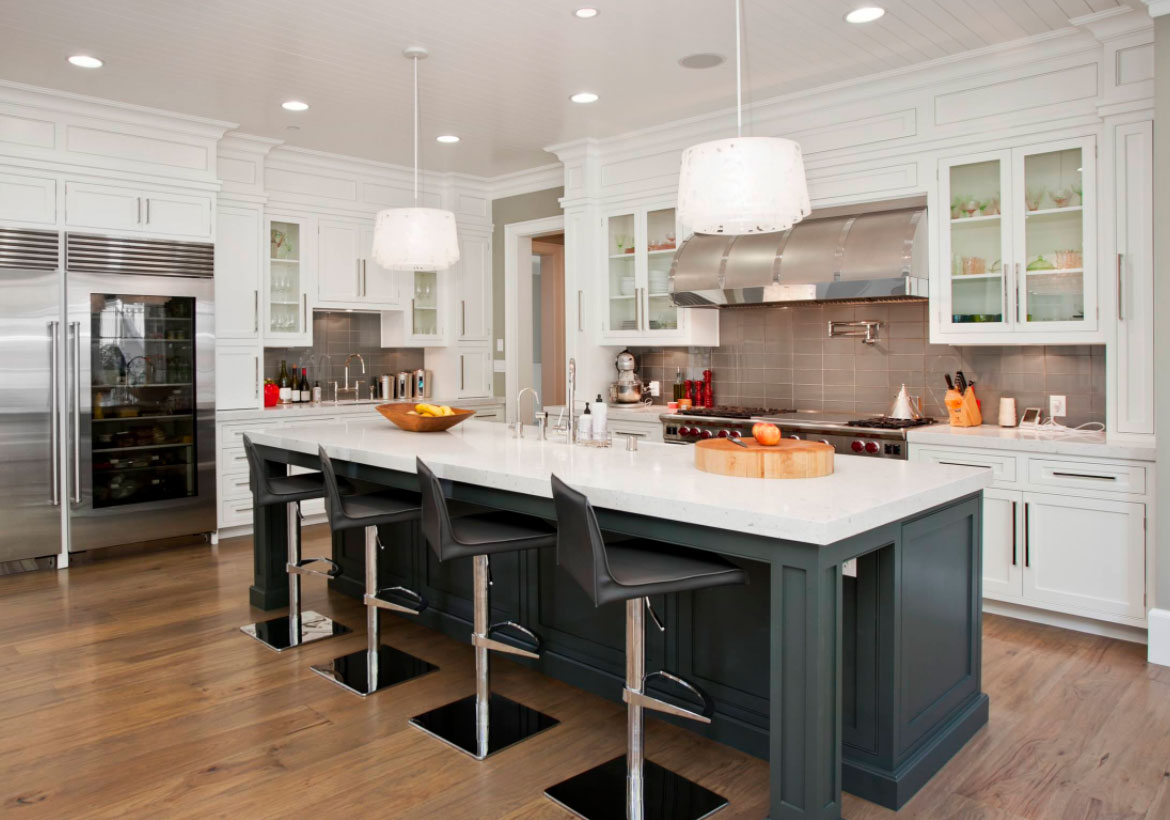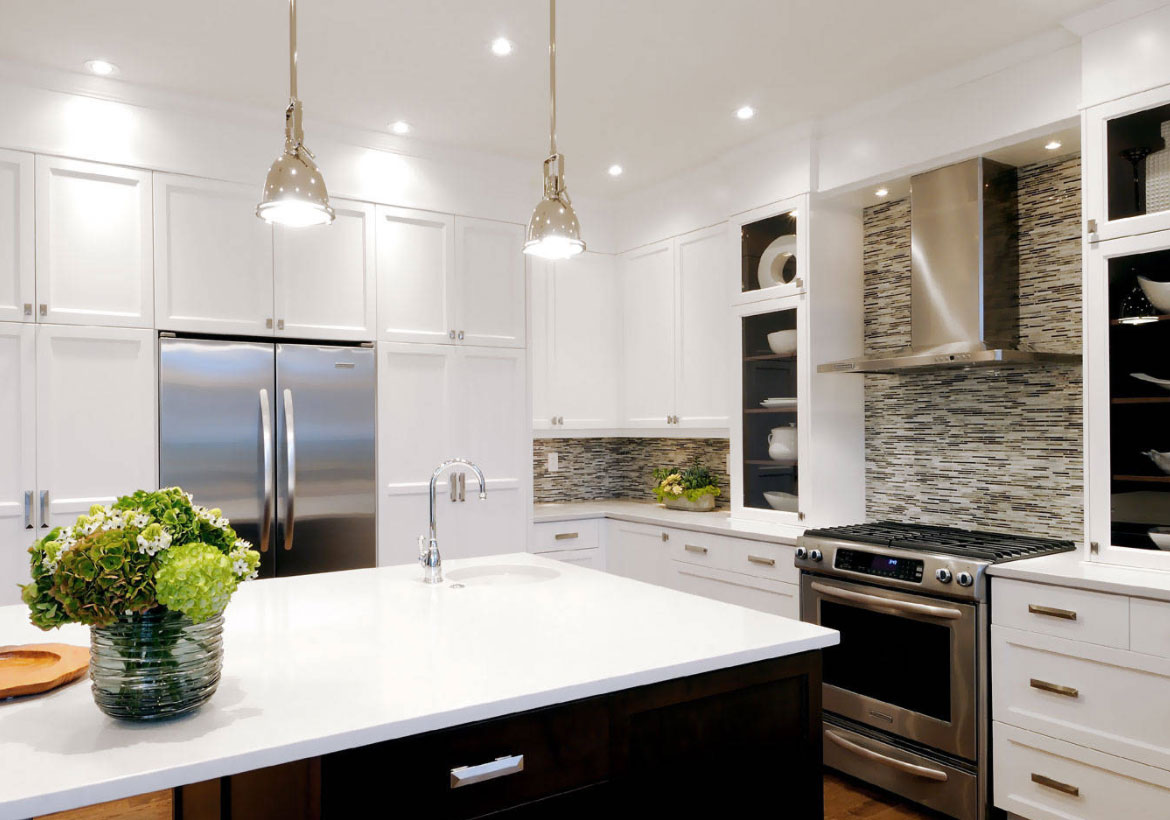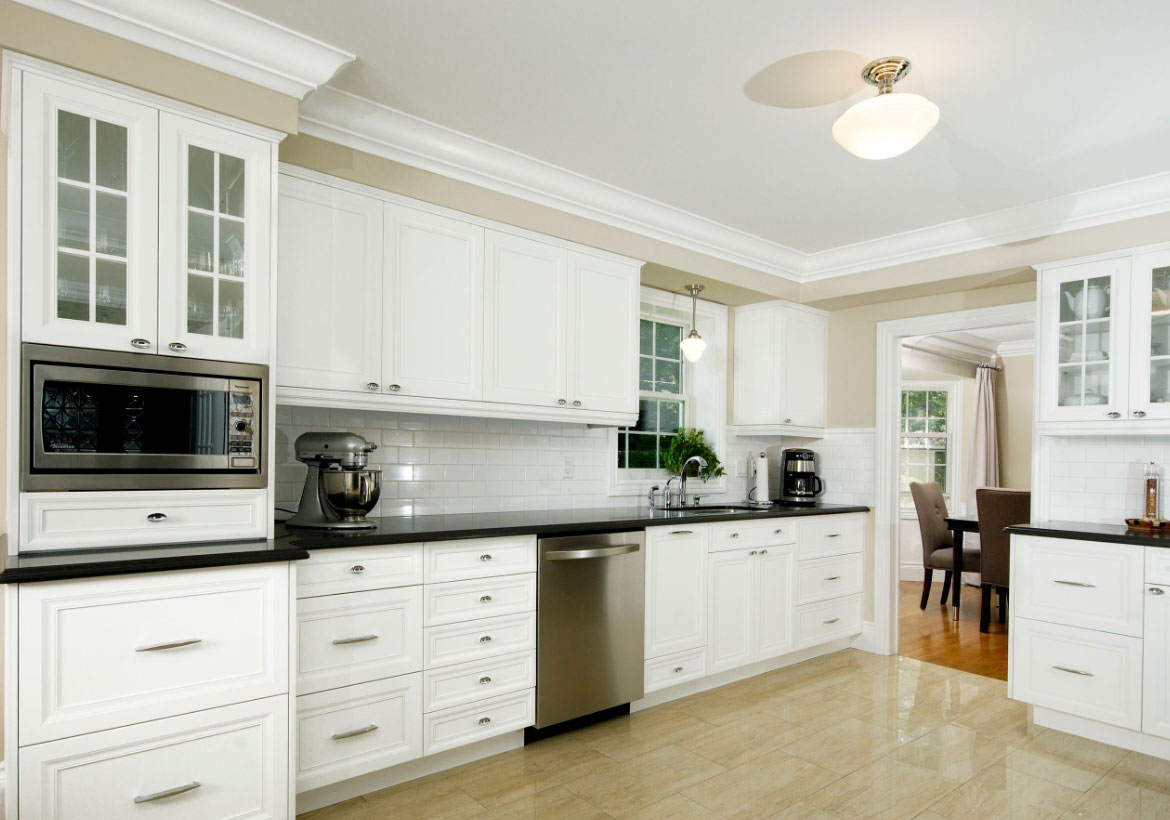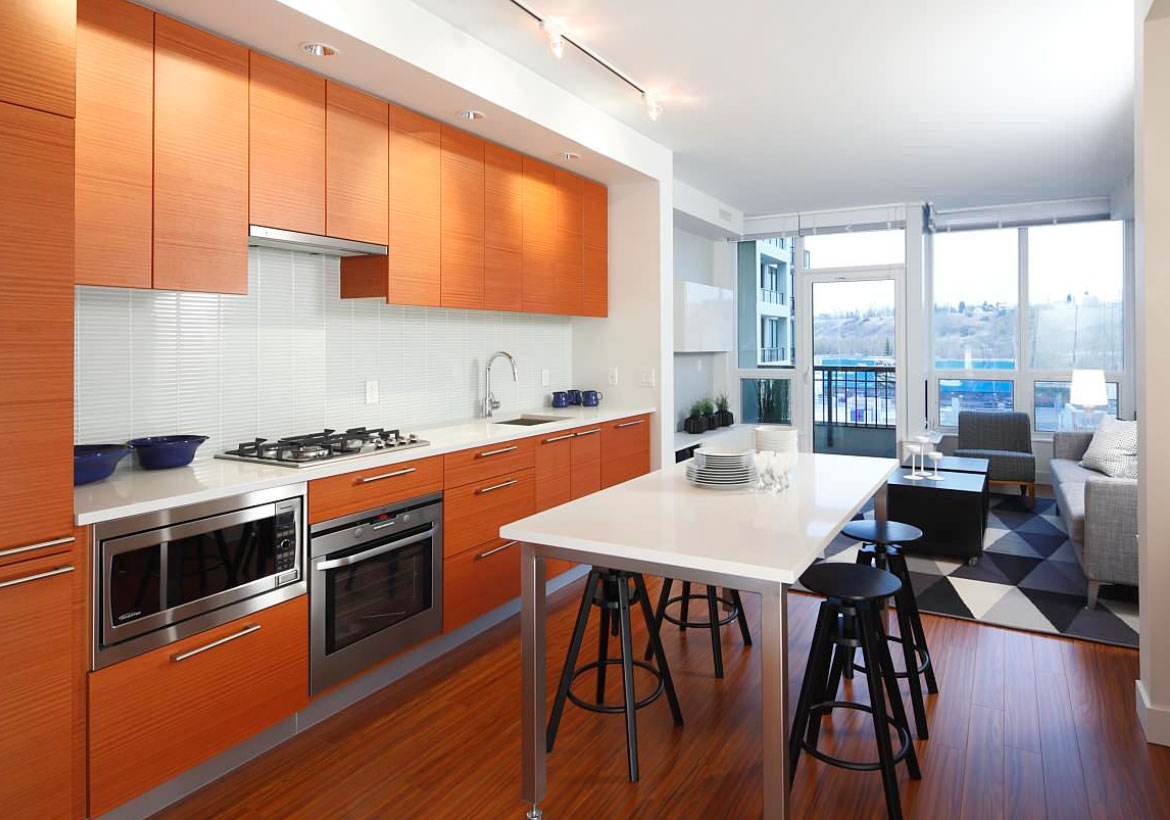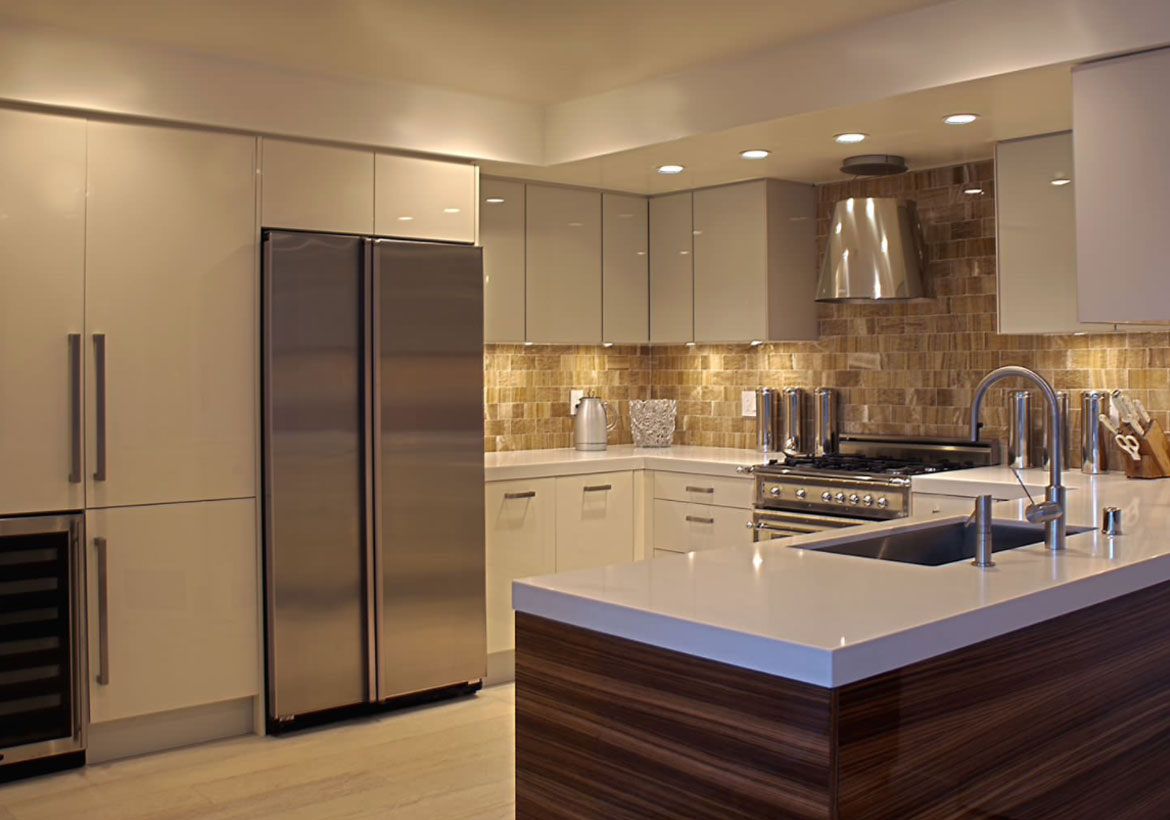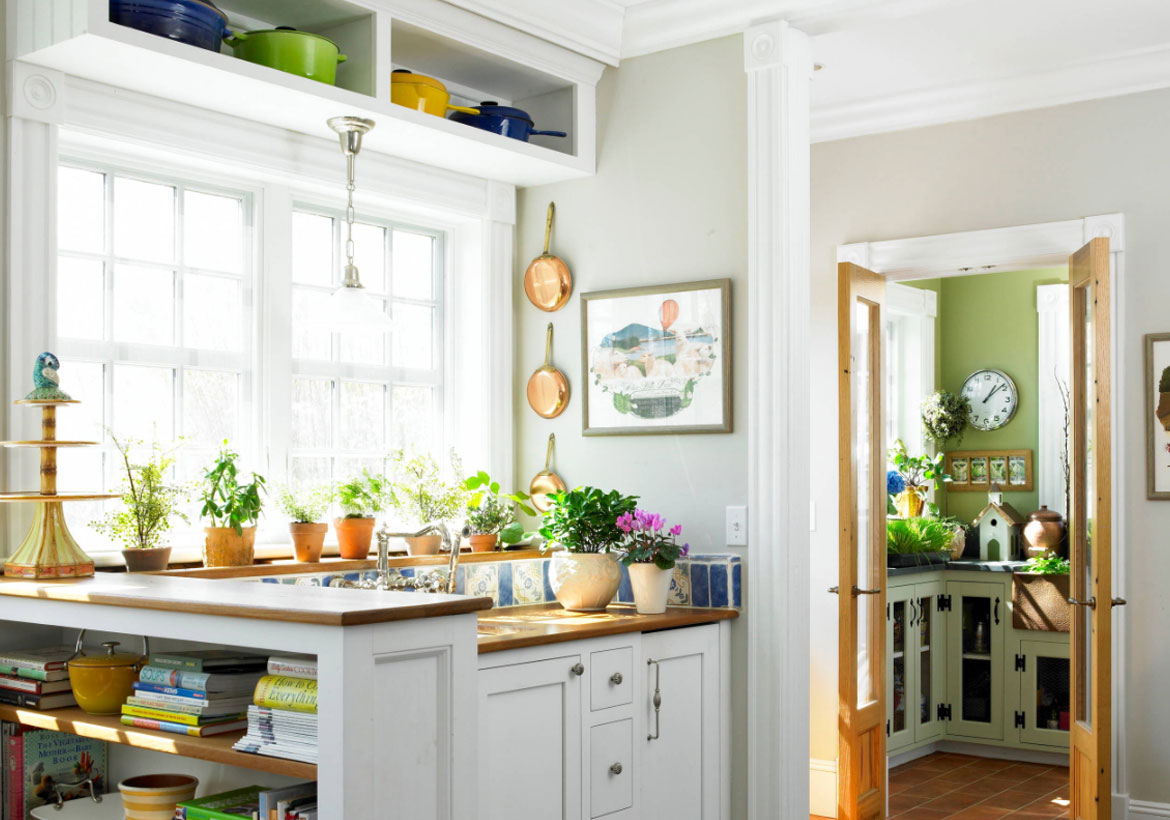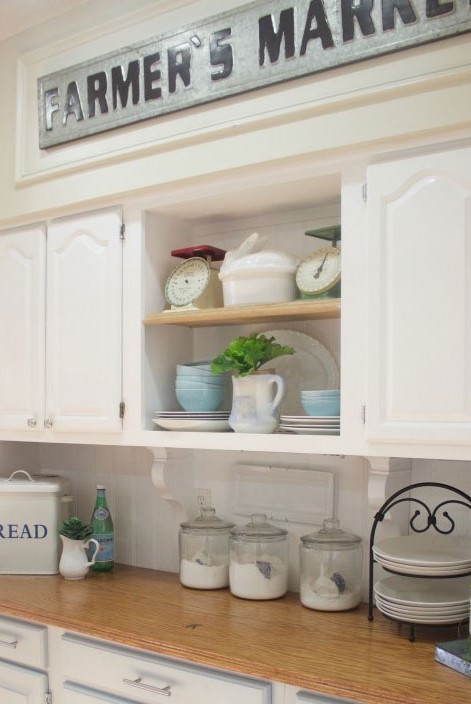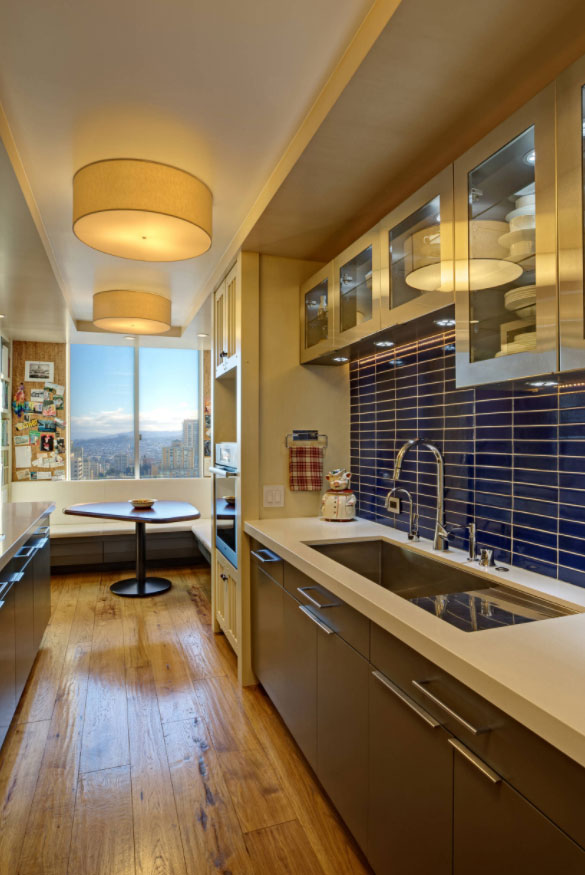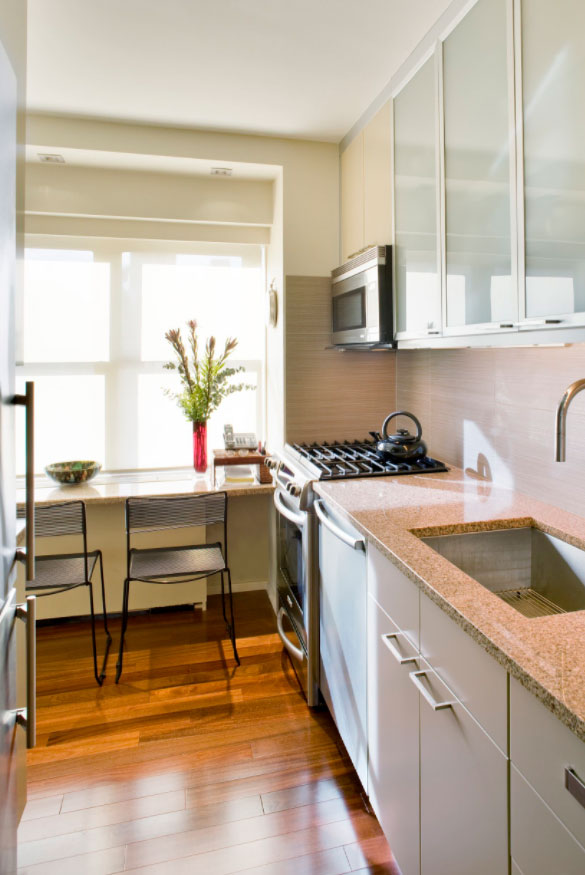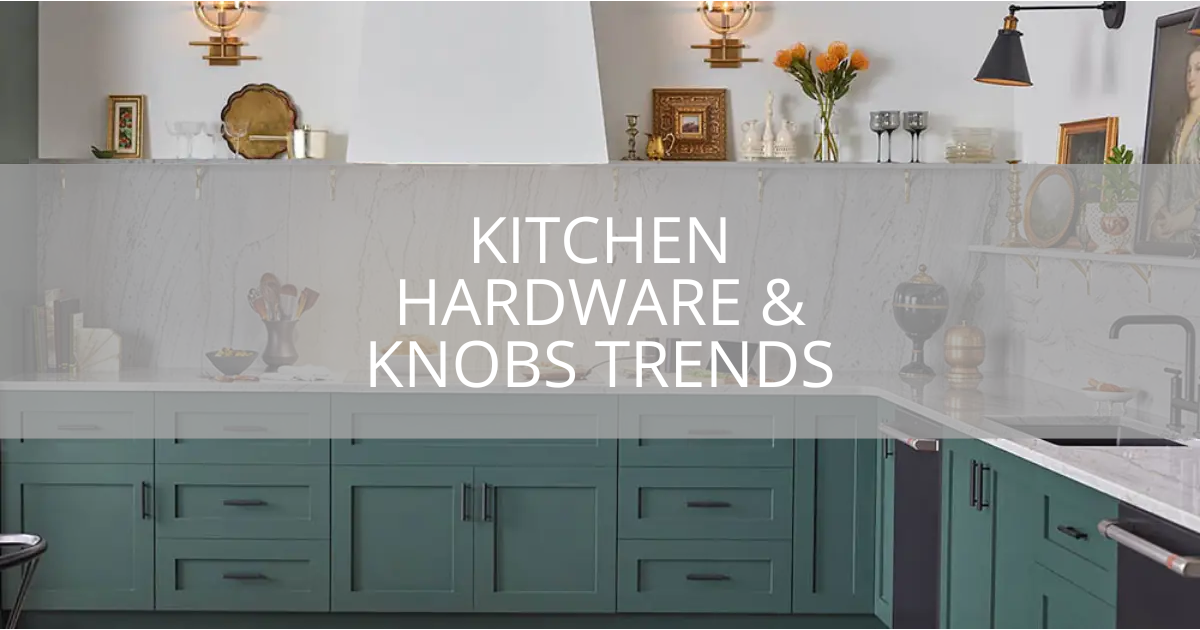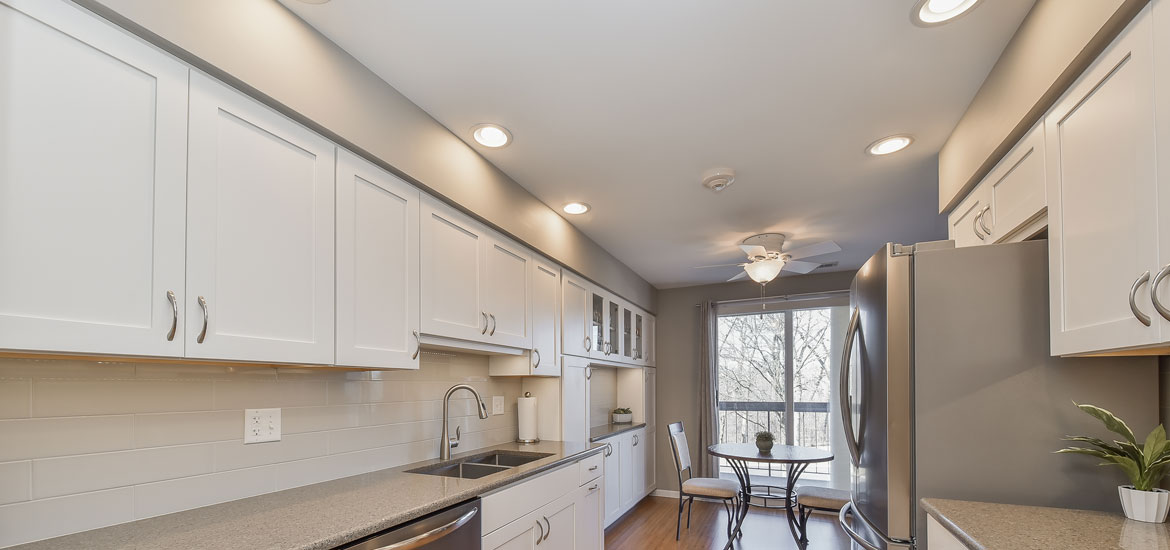
Sebring Design Build
Kitchen soffits sometimes known as bulkheads can be difficult to deal with if they are creating too much of a protrusion in your home. A kitchen soffit can’t always be removed, but can often be disguised or covered up in ways that allow the soffit to blend in with the overall look of the kitchen.
In this article, we’ll be taking a look at the definition of soffits, and why they take up space in a kitchen. Next, the article will present some ideas and tips for removing soffits and cabinetry around the soffits. A list of ideas for covering or disguising the soffits may come in handy for those situations where you may not be able to remove the soffits safely or effectively.
What is a Soffit?
What exactly is a kitchen soffit? Soffits themselves are often described as big, bulky, and box-shaped structures that are built to hide all of the wiring and mechanical components between your cabinets and your ceiling. They are most often seen in a kitchen, although soffits may exist in other parts of the home as well. Some older kitchens may have soffits that extend past the cabinets, creating a largely visual bump that is often aesthetically unappealing.
Depending on how the soffit is disguised (or not disguised), they can really make a kitchen look dated and feel too claustrophobic. Unfortunately, the removal of a kitchen soffit is not always an option, leading homeowners to come up with creative ways to cover them up. Some soffits can reach 4-5 feet, sitting as massive boxes that cover up the home’s mechanical and electronic parts.
So, what can be done about these somewhat monstrous necessities?

Interior Soffits
Soffits can sometimes ruin the look of a kitchen from cabinets to the ceiling. Interior soffits almost always exist in the kitchen, which can often lend itself as an eyesore depending on the architecture and stylistic design of the rest of the room.
But, that does not mean all hope is lost. In some cases, a kitchen soffit can be removed–and in other cases, they can be disguised to look like cabinets or existing foundation designs of the home. Concealing all ductwork, wiring, and machinery is not always easy, but it can be done with some creativity and a few tools at your side.
A kitchen soffit is often referred to as interior soffit because the mechanical and industrial components of the home are exposed to the indoors. Usually, those kinds of parts rest inside the walls, on the exterior, or underneath the home. But certain elements, like pipes that carry water and vents that circulate air from the stove; have to remain inside for better access. It’s possible to recreate a kitchen soffit that will work best for your space, depending on your style and the amount of room you have available.

Kitchen Soffit Removal
If it is possible to remove the soffits in your kitchen, then you should be certain that you have all of the tools and equipment at your disposal to properly remove them. You may want to consult with a contractor or a professional remodeler before beginning, as you won’t want to damage the circuitry or ventilation systems of your home.
Before you begin, you want to make sure to do the following:
- Turn off the power to all circuits connected to the kitchen. The only way to ensure that you won’t damage yourself or your appliances is to turn off any and all circuitry that runs to the kitchen. Use a voltage detector to be double sure that there is no active current.
- Mark untouchable spots. There are certain components of the kitchen that you cannot remove, such as exhaust ductwork and other piping. Clearly mark these areas so you know not to damage them when removing the other parts of your soffits.
- Remove crown molding and other decorative pieces. This is the best way to go about removing soffits is to remove the surrounding crown molding first.
Next, you’ll want to remove the cabinets.
How to Remove Kitchen Cabinets
Your kitchen cabinets are likely going to be touching your soffits, and all cabinets touching the soffits should be removed. You may need to go slowly with this step, giving your cabinets a thorough inspection to make sure that you understand how they are fastened to the wall.
Some cabinets are all interconnected as one long cabinet with many shelves. Cabinets are usually screwed to studs or nailed to the back of the wall, through the back of the cabinet. They are attached by studs to the underside of the soffits, and the fasteners for this are likely on top of the cabinets. Remember that soffits typically fill up the entire gap between the cabinets and the ceiling, so you likely won’t be able to see the top of the cabinets since the soffit is in the way.
Removing the Soffits
Removing soffits can be a messy process. Be prepared to remove a ton of drywall. Take caution to avoid those spaces you marked as untouchable. Don’t hammer into the vents or important wiring.
Most of the drywall will reveal empty space underneath it, though. You’ll need some handsaws to cut through possible 2 x 4’s, and hammers to clear out the rest of the drywall. You may need to apply some elbow grease to the parts of the soffit that are attached to the walls. It may not always be a cinch to remove the entire thing, but with the proper amount of tools and time, it can be done.
Kitchen Soffit Ideas
If you can’t remove your soffits, don’t fret – there are plenty of ways to disguise and creatively cover your soffits. Here are a few vintage kitchen soffit ideas to help you come up with ways to incorporate them into the natural design and elegant structure of your kitchen.
Make the Soffit Thicker
The last thing on your mind is making the soffit even thicker, right? However, this can actually work to disguise it. You can thicken the soffits to act as a border around your kitchen, naturally blending it in with the existing cabinetry and attachments around the walls. That way, it will appear as if it is just an extension of the wall itself, adding to the dynamic design of the room.
Add Crown Molding
Molding adds beauty to any corner of a room, and using crown molding as a border to line the soffits can add a touch of elegance and sophistication to your kitchen. It can add dimension, transforming your kitchen into something that is bordered by a decoration that will never go out of style.
Make the Soffit into a Beam or Pillar
You can add extensions to make it look like the soffit is a wooden beam or a pillar that adds architectural function and integrity to the kitchen. This is most easily achieved with a little bit of construction or remodeling strategy, but can also be done just by painting the soffit a different color. You can also add beams around the kitchen to match the thickness and length of the soffit so that it will blend in even more.
Build New Shelves
You may not be able to remove your soffits, but you can certainly remove your cabinets if you feel the need to. Sometimes, replacing your older or out-of-shape cabinets with newer cabinets can help cover up some of the soffits. Since some older soffits can stick out beyond the cabinets, you may want to install cabinets that match or even extend past the length of the soffit itself. You can install cabinets yourself or consult with a contractor to figure out the best placement and style for your newest additions.
Cover the Soffit with Artwork
You can add some artwork to the soffit without making the kitchen look too cluttered. Add some framed pictures in a linear, horizontal fashion, so that your soffit then becomes a pop-out wall featuring your favorite images. Family members and guests alike will quickly find that to be their favorite part of the kitchen. Plus, this is a great way to add some of your personal flavor and style to the room.
Paint
Painting your ceiling a different color from your cabinets will help the soffit to blend in with the cabinets. This is true if you paint the soffits and the cabinets the same colors as well; adding a splash of color in another part of the kitchen will make the other elements blend together as one. Most of the time, your guests and family members will assume that the soffit is a part of the cabinetry.
Make a Nook
Nooks are creative ways to make the look and feel of your kitchen unique. You can extend the soffit as part of the sidewall to make a nook. This nook can be used for aesthetic purposes only, or you can add some cubbies or a small hall table to give it its own type of charm.
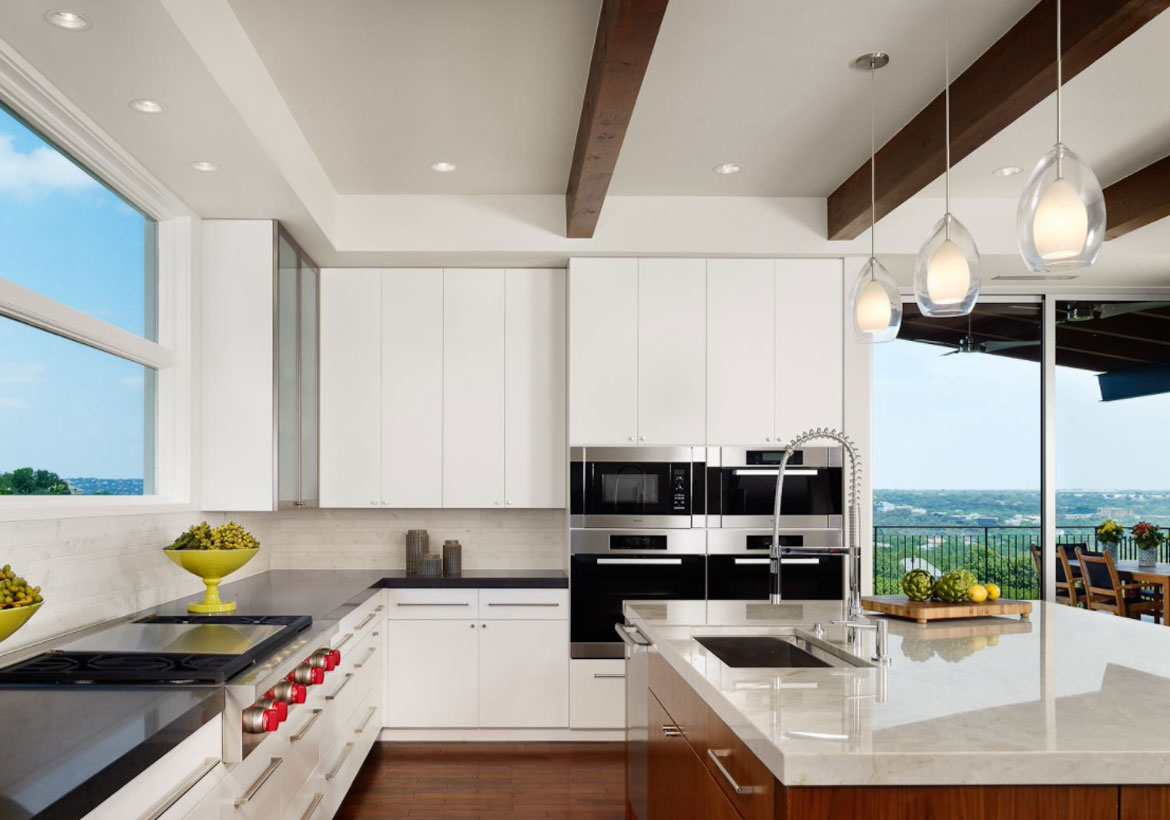
Make the Soffit Your Own
The best thing to do if you can’t get rid of your kitchen soffit is to invest in some creative options to make it your own. You can easily blend the soffit into other parts of the kitchen by adding paint, molding, or wall extensions.
If you do have the opportunity to remove or remodel the soffit, there are plenty of ways to achieve that as well. You can start by removing the existing cabinetry and turning off the electrical components of your kitchen. Then, you can readjust or rewire the existing mechanical parts and add a new, smaller soffit to your kitchen.
Be sure to reach out to a professional if you are looking for additional ideas on dealing with your kitchen soffits. While they can be annoying necessities, they don’t need to be dealt with as ugly protrusions above your cabinets. There are many ways you can work to adapt and disguise the soffits in order to increase the value and aesthetic appeal of your beautiful kitchen.


